Three-cup anemometer online for sale online. Wind speed range 0~60 m/s, Wind cups of the wind gauge are made of carbon fiber, with high intensity and low starting threshold. Wind speed sensor for air velocity testing, small size, east to use, light weight, good price.
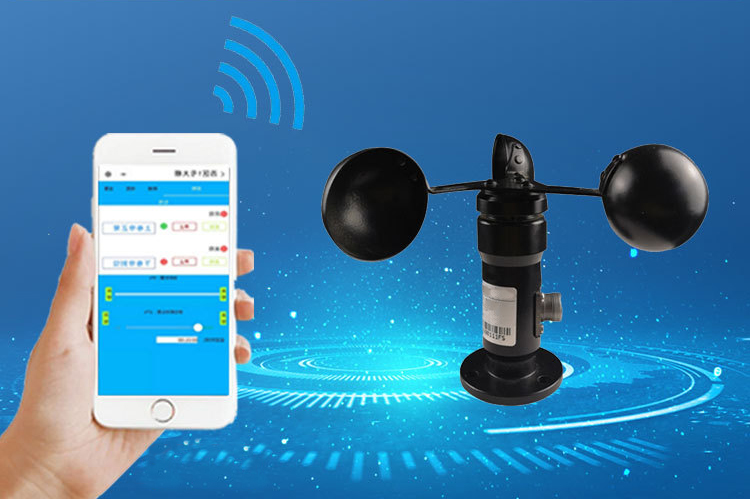
Wiring-free design
- The upper and lower wind speed limits can be set on the phone, and when the wind speed reaches the upper and lower limits, the phone will be alerted.
- The phone monitors the current wind speed value in real time and displays the current wind speed.
- In the cell phone software, you can check the real-time wind speed value at any time.
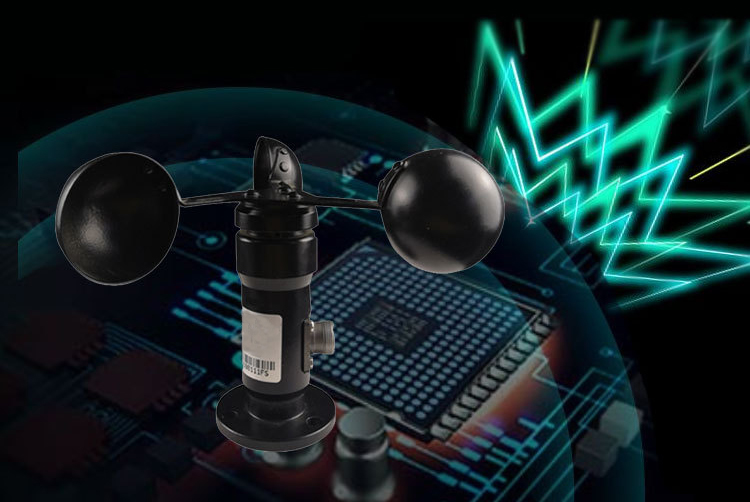
Electroplating spraying treatment outdoor use level
- The external plating spraying treatment, with good anti-corrosion, anti-leaching and other characteristics to protect.
- Transmitter long-term use without rusting phenomenon.
3-Cup Anemometer Output Characteristics
- Pulses Output
V=0.5+0.169*F
V: Wind speed,m/s
F: Numberof pulses within 1 second
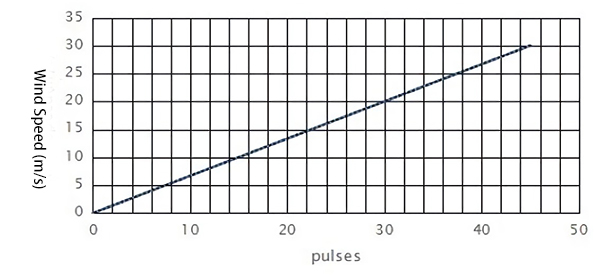
- Current Output
Characteristic transfer function: V = (1-4)/(20-4)*50 (Range: 0-50m/s)
(where V = wind speed (m/s), I = output Current (mA)
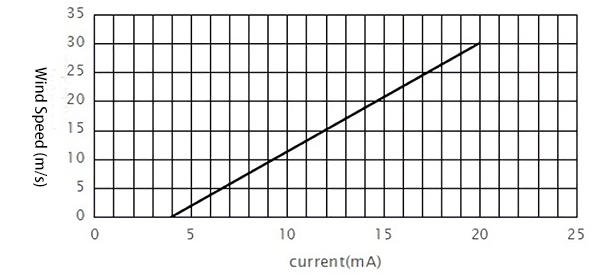
- Voltage Output
Characteristic transfer function:
V = U/ (full scale voltage - zero point voltage) * 30
(where V = wind speed (m/s), U = output voltage (V) )
- RS-485 Output
lf the transmission distance is over 100m, please add a 120Q terminal matching resistances on the front endand back end of bus interface respectively. See the modbus communication protocol specification.
Application
The three-cup anemometer is widely used for data acquisition in boilers, refrigeration, HVAC, ventilation ducts, agriculture meteorological station, meteorologica monitoring for seaport, weather minitoring for expressway, wind power generation weather station.
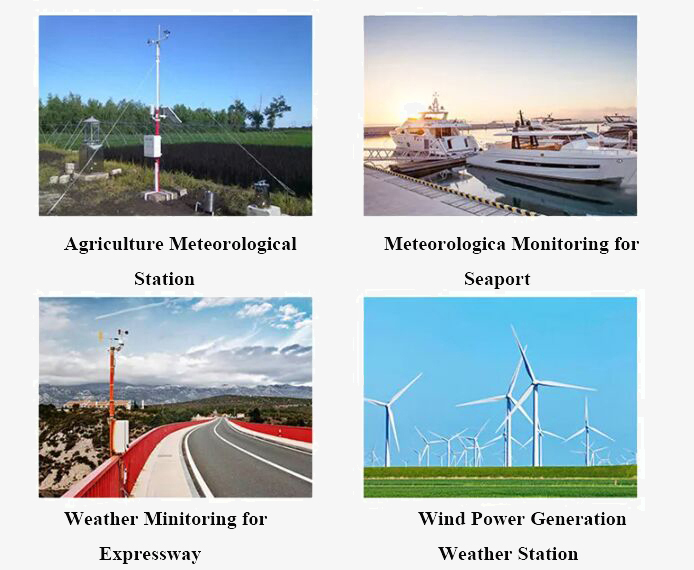
| Model | SISCO-RK100-01G | |
| Supply Voltage | 12-24VDC | 5-24VDC |
| Output | RS485,4-20mA | Pulse(Pulse high level depends on the supply voltage) |
| Range | 0-30m/s, 0-50m/s, 0-60m/s | |
| Starting Threshold | 0.2m/s | |
| Limit Wind Speed | 70m/s | |
| Accuracy | ±(0.3+0.03V)m/s | |
| Resolution | 0.1m/s | |
| Response Time | <1s | |
| Power Consumption | 20mA@12VDC | |
| Ingress Protection | IP65 | |
| Operating Temperature | -30℃-+70℃ | |
| Main Material | Aluminum alloy | |
| Connector | M12 waterproof connector | |
| Surface Treatment | Polyester powder electrostatic spraying(black) | |
| Weight (unpacked) | 410g(Excluding wires) | |
| Storage Condition | 10℃-60℃@20%-90%RH | |
Dimension (Unit: mm)
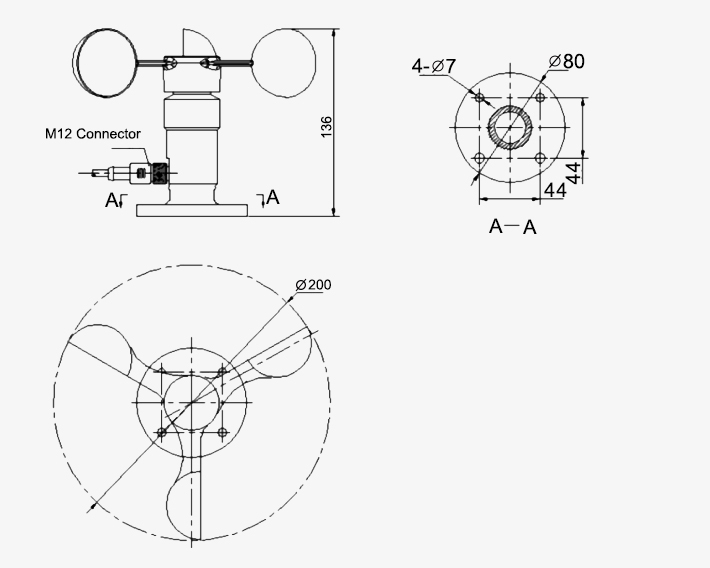
Q1: How do you ensure accuracy of anemometer?
A1: To make sure anemometers are reliable and precise, they should be regularly calibrated. This is the procedure of checking the accuracy of a measuring instrument – as well as the adjustment to align it with the standard. The process allows equipment to produce more accurate results than would've otherwise been possible.
Q2: What affects an anemometer?
A2: The higher the wind speed, the more power is required to keep the wire at a constant temperature. Wind speed can also be determined by measuring air pressure. (Air pressure itself is measured by an instrument called a barometer.) A tube anemometer uses air pressure to determine the wind pressure, or speed.
Q3: Does an anemometer measure wind direction?
A3: An anemometer looks like a weather vane, but instead of measuring which direction the wind is blowing with pointers, it has four cups so that it can more accurately measure wind speed. Each cup is attached to the end of a horizontal arm, each of which is mounted on a central axis, like spokes on a wheel.
Tips: How does a 3-cup anemometer work?
The most common type of anemometer has three or four cups attached to horizontal arms. The arms are attached to a vertical rod. As the wind blows, the cups rotate, making the rod spin. The stronger the wind blows, the faster the rod spins.
Thank you for buying industrial test and measurement equipment on SISCO.com, all products sold by SISCO and the partner cover a 12 months warranty, effective from the date of receiving the products.
What is covered?
SISCO is responsible for providing free spare parts, and free technical support to assist the customer to repair the defective products until the problem is solved.
What is not covered?
- Product purchased from anyone other than a SISCO store or a SISCO authorized reseller.
- Expendable parts.
- Routine cleaning or normal cosmetic and mechanical wear.
- Damage from misuse, abuse or neglect.
- Damage from use of parts other than SISCO approved.
- Damage from use outside the product’s usage or storage parameters.
- Damage from use of parts not sold by SISCO.
- Damage from modification or incorporation into other products.
- Damage from repair or replacement of warranted parts by a service provider other than a SISCO authorized service provider.
- Damage caused by the application environment not meeting the product usage requirements and the failure to perform preventive maintenance.

